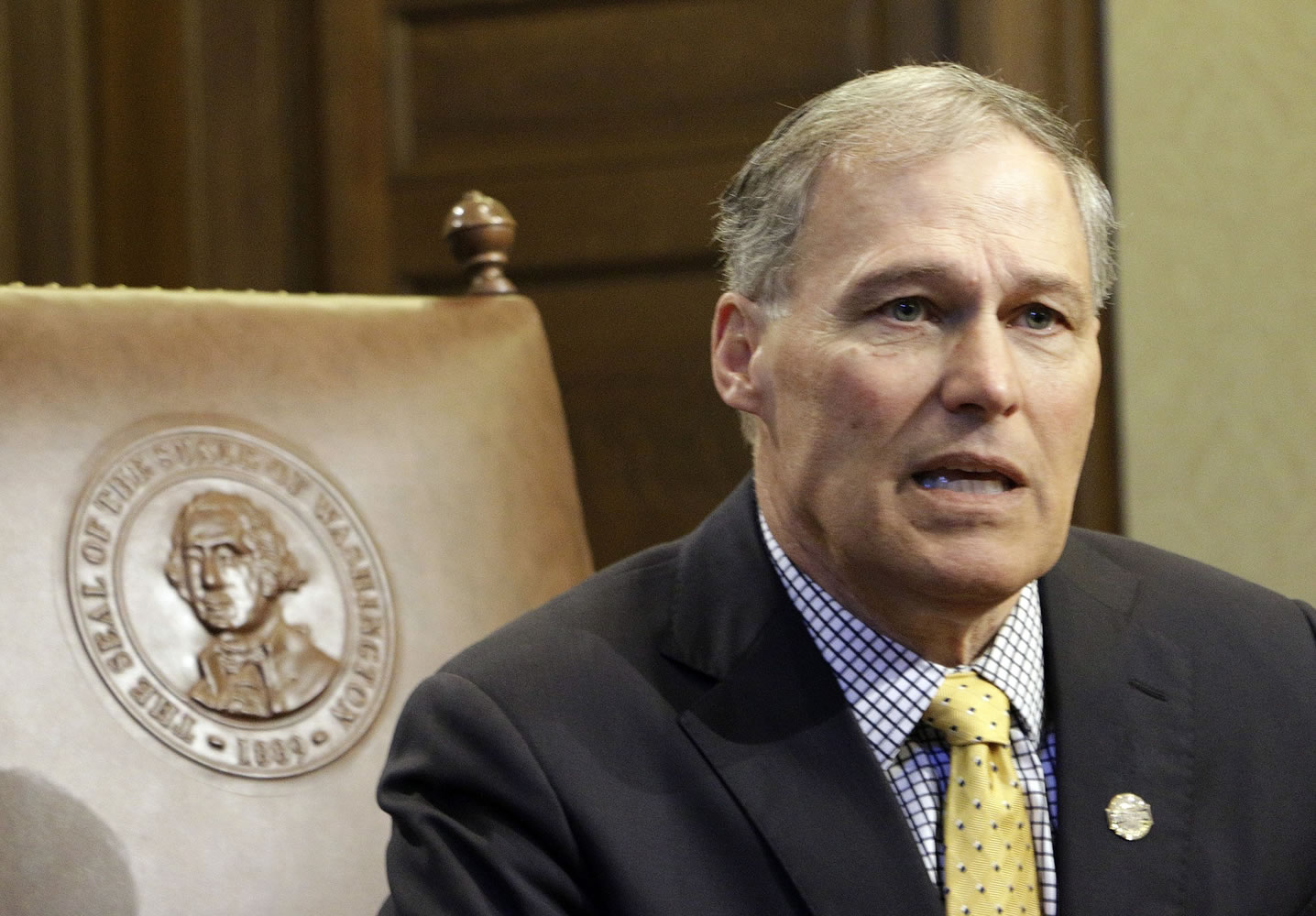Gov. Jay Inslee on Friday expanded Washington’s drought emergency to cover nearly half the state, including much of Southwest Washington and all of Clark County.
The declaration means Clark County can qualify for relief funds that can be used for various water supply measures. It also means the county is expected to experience at least some hardship from the growing drought.
“This is an ongoing emergency, and we’re going to have some long, hard months ahead of us,” Inslee said in a released statement. “We’re moving quickly so that we’re prepared to provide relief to farms and fish this summer.”
Officials have characterized this year’s emergency as a “snowpack drought.” Despite near-normal precipitation across the state since October, unusually warm temperatures have resulted in a dismal mountain snowpack. In Southwest Washington’s Lower Columbia basin, for example, snowpack stood at just 18 percent of normal for this time of year as of Friday. Some other parts of the state look even worse.
“We’ve never experienced a drought like this before,” state Department of Ecology Director Maia Bellon said in a conference call with reporters Friday. “It’s not for lack of rain, but lack of snow.”
The state expects runoff from snowmelt this summer to be the lowest on record in 64 years, which could carry broad ecological and economic implications. It could translate into low rivers and streams, potentially affecting agriculture, fish and other things.
In Clark County, the decision to declare a drought stemmed more from impacts to fish than agriculture, said Jeff Marti, the ecology department’s drought coordinator.
Rivers and streams in Southwest Washington are expected to run at record lows this year, which will create migratory barriers for fish, plus problems for habitat and hatcheries, he said.
Local growers so far haven’t expressed many concerns about conditions this early in the season, said Charles Brun, horticulture advisor with Washington State University’s Clark County Extension. Many of the county’s common crops — some berries, apples and Christmas trees among them — grow without irrigation, Brun said. Farmers here haven’t needed to tangle with water rights and regulations that are more of a concern in other parts of the state, he said.
The Ecology Department has asked the Washington Legislature for $9 million this year for drought relief. Those funds can be used for work such as drilling emergency wells, deepening river channels and leasing water rights for irrigators, Bellon said.
Public water supply systems shouldn’t experience problems for the most part, Bellon said. Vancouver, for example, draws its drinking water from underground aquifers, which are generally more stable than surface sources. Reservoirs in the state’s most populous areas are in good shape, Bellon said.
Expected hardships from this year’s drought will become more pronounced later in the summer, Bellon said. And the emergency could expand further: A statewide drought declaration remains “very possible,” she said.
“Every river basin in the state is on our watch list,” she said.
In addition to all of Clark and Skamania counties, the current drought area includes parts of Cowlitz, Klickitat and Lewis counties. Friday’s declaration expanded a drought emergency that Inslee initially declared last month.
The last previous drought declaration in Washington occurred in 2005.




